Coffee Questions: Why Temperature Matters
Ever tried to make a cup of coffee with water that isn’t hot enough? I didn’t intend to, but the downside of having a variable-temperature kettle is, if you make tea the night before at 175ºF and don’t change the temperature back, you’ll end up with a muddy mess that takes too long to draw down, tastes aggressive and sour, and barely qualifies as a hot cup of coffee.
But why does brewing temperature matter? More specifically, how does temperature affect coffee brewing and how hot should my water be to make a good cup of coffee?
Coffee Brewing Basics
The goal of coffee brewing is to extract from the coffee beans all of the good flavor characteristics with none of the bad. Using tools like time, temperature, coffee to water ratio, coffee grind size, and agitation, we can adjust extraction until we get a coffee that is balanced, with a bright and clear tasting note, pleasant mouthfeel and body, and a sweet, clean finish.
Trying to make decisions about five different variables is way too complicated, especially since it’s likely before you’ve had a cup of coffee. Too make it easier, we recommend using brewing recipes. A good brew recipe is straightforward, easy to replicate, and does a good job of balancing all of the variables for you to create a great cup of coffee. So how does temperature affect brewing?
Water Extracts
Water quality is important. We use the variables mentioned earlier, including temperature to control how water extracts the goods from the coffee. Adjusting temperature determines how quickly the water will be able to extract coffee compounds. As with cooking, the hotter the temperature, the faster the desired change will occur. This is one of the reasons why a shot of espresso can be brewed in thirty seconds while cold brew can take up to sixteen or eighteen hours to brew.
Brewing an AeroPress with a Bona Vita Kettle
Slurry vs. Kettle
So water temperature matters, but water temperature at what point?
It’s always been easiest to measure the temperature of the water in the kettle. Whether using the off-boil method of a stovetop kettle or using an electric kettle, it’s been fairly common to recommend your kettle be within the SCA brewing guidelines of between 195ºF-205ºF. However, just because your kettle reads 200ºF, it doesn’t mean that the coffee is actually being extracted at that temperature.
When the water leaves the kettle, it travels 4-6 inches through 70-75ºF air, into a brewer that has (hopefully) been preheated, and a bed of room temperature, dry coffee grounds. If you start out at 200ºF, you may end up at 195ºF or 190ºF by the end of your brewing. To counteract this, we recommend setting your kettle at a higher temperature and making sure to thoroughly preheat your brewer. We recommend starting with 210ºF on an EKG kettle. However, coffees tend to become more soluble the darker they are roasted, so if you’re drinking darker roasted coffee than what you find here, you might benefit from a lower temperature.
Brewing a 10 Cup Chemex with a Stagg Kettle and Acaia Pearl Scale
Temperature Experiment
Since temperature isn’t the only variable we use to brew coffee, we can adjust the other variables to adapt to lower brewing temperatures. Slowing down your pouring can keep the water in the kettle longer as long as you make sure to keep the coffee bed saturated, grinding your coffee more finely, or incorporating some stirring into your brewing can all increase extraction.
No one wants to drink a bad cup of coffee, so instead of suffering through a pourover at 175ºF, try making a cup of coffee at five degrees cooler than you normally would, but adjust grind to a slightly finer size. These variables should offset each other, and you should end up with a similarly tasting cup of coffee!



